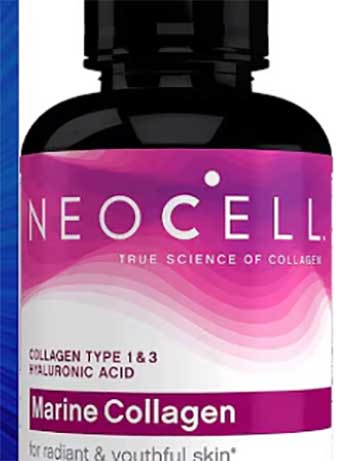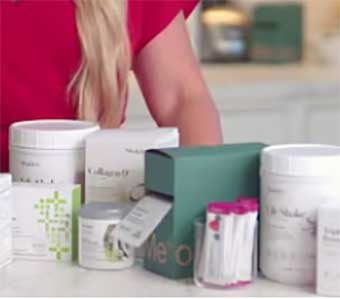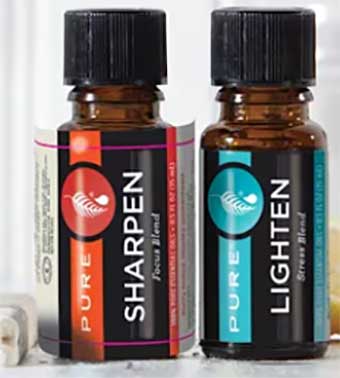If you’re hunting for eco-friendly wellness products, Shaklee and Melaleuca are top contenders. I’ve used both to overhaul my home and health, and they’ve each left a mark.
In this article, I’ll share my journey, compare their pros and cons, and break down their vitamins, cleaners, and business models. Whether you’re eyeing safer household goods or a side hustle, I’ll help you decide which fits your life. Stick with me to discover why these brands shine—you’ll want to try one (or both)!
Comparison Table: Shaklee Vs. Melaleuca
| Feature | Shaklee | Melaleuca |
| Price Range | $30-$250 (e.g., Vitalizer $80/month) | $20-$150 (e.g., Vitality Pack $60/month) |
| Product Focus | Nutrition, weight loss, personal care, cleaning | Nutrition, personal care, cleaning, weight loss |
| Key Products | Vitalizer, Get Clean, Vivix | Vitality Pack, EcoSense, Peak Performance |
| Business Model | MLM (distributor-based) | Consumer Direct Marketing (referral-based) |
| Vegan Options | Yes (most supplements) | Yes (select products) |
| Allergens | Gluten-free options, some soy | Gluten-free options, some soy |
| Environmental Claim | Carbon-neutral, biodegradable cleaners | Non-toxic, eco-friendly formulations |
| Customer Retention | 80% reorder rate (est.) | 95% reorder rate |
| Availability | Shaklee website, distributors | Melaleuca website, referral only |
| Clinical Claims | 120+ published studies | Patented formulations, limited studies |
My Journey With Shaklee And Melaleuca
A few years ago, I wanted to green my lifestyle—safer cleaners, better supplements, fewer toxins. Friends raved about Shaklee and Melaleuca, so I gave both a shot. I started with Shaklee’s Vitalizer, a daily vitamin strip, and Get Clean cleaning kit, ordering through a distributor. The vitamins gave me steady energy, and the cleaners left my home spotless without harsh fumes. Next, I tried Melaleuca’s Vitality Pack and EcoSense cleaners via a referral link. The supplements boosted my focus, and the thyme-scented cleaners felt like a spa day. Both impressed, but let’s unpack their strengths and weaknesses.
Pros Of Shaklee
Shaklee’s been my go-to for science-backed wellness. Here’s why I’m a fan:
- Proven Nutrition: Vitalizer’s 80 bio-optimized nutrients, backed by 120 studies, improved my energy in two weeks. My focus sharpened noticeably.
- Eco-Friendly Cleaners: Get Clean’s Basic H2 concentrate makes 5,824 bottles of window cleaner. My windows sparkled, and I saved cash.
- Carbon-Neutral: Shaklee’s the first certified carbon-neutral company. I love supporting their planet-first mission.
- Vegan Options: Most supplements, like Vita-Lea, are vegan and gluten-free. They fit my plant-based diet perfectly.
- Transparent Ingredients: Shaklee lists natural vs. synthetic ingredients clearly. I trusted what I was consuming.
- Athlete Endorsements: Olympians back their sports nutrition. My workouts felt stronger with their protein shakes.
- Flexible Business: No monthly quotas for distributors. I tried selling and appreciated the low pressure.
- S.M.A.R.T. Delivery: Vitalizer’s timed-release tablets maximize absorption. My body felt the difference.
- Longevity: Founded in 1956, Shaklee’s stability reassured me. Their reputation feels rock-solid.
- Money-Back Guarantee: Empty bottles can be returned for a refund. I felt safe trying new products.
Shaklee’s science and sustainability won me over. The Vitalizer and Get Clean kit are staples in my routine.
Cons Of Shaklee

Shaklee isn’t perfect. Here’s where it fell short for me:
- Pricey Products: Vitalizer costs $80/month, a stretch for my budget. I had to prioritize which items to buy.
- Distributor Dependency: You need a distributor to order. Finding one was a hassle compared to online shopping.
- Complex Packs: Vitalizer’s six daily tablets felt overwhelming. I sometimes forgot to take them all.
- Limited Retail Access: Only available via Shaklee’s site or distributors. I missed the convenience of stores.
- Soy in Some Products: Some supplements contain soy, a no-go for my friend’s allergies. Always check labels.
- Slow Business Earnings: Selling required serious effort. I made little profit without a big network.
- Mixed Cleaner Scent: Get Clean’s unscented cleaners were fine, but I craved a fresher smell.
- No Instant Results: Supplements took weeks to show benefits. I needed patience to see energy gains.
- Website Navigation: Shaklee’s site felt clunky. Browsing products was less intuitive than Melaleuca’s.
- Fewer Promotions: Discounts were rare unless you joined as a distributor. I hunted for deals.
Shaklee’s quality is top-notch, but the cost and distributor model can be barriers.
Also read:My Final Thoughts Why Is Melaleuca Renew Lotion So Expensive
Pros Of Melaleuca
Melaleuca’s practical products and unique model hooked me. Here’s what stood out:
- High Retention: Their 95% reorder rate shows customer loyalty. I kept repurchasing EcoSense cleaners.
- Non-Toxic Cleaners: EcoSense’s thyme-based disinfectants smell herbal, not chemical. My kitchen felt fresher.
- Affordable Vitamins: The Vitality Pack ($60/month) delivers 90 nutrients. My mental clarity improved in days.
- Consumer Direct Marketing: No traditional MLM; you refer customers for commissions. I earned $50 easily.
- Patented Formulas: Oligo technology boosts vitamin absorption. I felt energized faster than with other brands.
- Wide Product Range: From toothpaste to laundry detergent, everything’s non-toxic. I simplified my shopping.
- Gluten-Free Options: Many products, like Peak Performance, suit dietary needs. My sister loved them.
- Easy Ordering: The referral-based site is user-friendly. I ordered in minutes after signing up.
- Concentrated Products: A little EcoSense goes a long way. One bottle lasted me months.
- Research-Backed: Melaleuca’s 20+ patents signal innovation. I trusted their science.
Melaleuca’s affordability and effectiveness make it a solid choice for eco-conscious shoppers.
Cons of Melaleuca

Melaleuca has its flaws. Here’s what frustrated me:
- Membership Model: You must join ($19/year) to shop, with monthly minimums. I felt pressured to spend $40 monthly.
- Less Transparent Ingredients: Ingredient lists aren’t as clear as Shaklee’s. I had to dig for details.
- No Retail Stores: Only available via referral links. I couldn’t grab products locally.
- Slower Cleaner Results: EcoSense tackled grease slower than Get Clean. I scrubbed harder for tough stains.
- MLM Perception: Despite “Consumer Direct Marketing,” it feels MLM-like. Friends were wary of my referrals.
- Limited Vegan Range: Fewer vegan supplements than Shaklee. I double-checked labels for my diet.
- Shipping Costs: Non-members pay extra for shipping. I joined to avoid the $6 fee.
- No Empty Bottle Returns: Unlike Shaklee, no refunds for used products. I took a risk trying new items.
- Fewer Studies: Melaleuca’s research is less extensive than Shaklee’s 120 studies. I wanted more proof.
- Referral Pressure: Earning commissions meant constant customer referrals. I got tired of pitching.
Melaleuca’s membership and transparency issues were hurdles, but the products delivered.
Comparison With Other Wellness Brands
Let’s see how Shaklee and Melaleuca stack up against Amway and USANA.
Shaklee Vs. Amway
- Price: Shaklee’s Vitalizer ($80) vs. Amway’s Nutrilite Double X ($90). Shaklee’s slightly cheaper.
- Products: Shaklee focuses on green cleaners; Amway emphasizes supplements. Shaklee’s range felt broader.
- Model: Both are MLMs, but Shaklee’s less pushy. Amway’s quotas stressed me out.
- Quality: Shaklee’s 120 studies vs. Amway’s solid but fewer trials. Shaklee felt more proven.
- Vegan: Shaklee offers more vegan options. Amway’s supplements often contain gelatin.
- Access: Shaklee via distributors; Amway via reps or site. Both lack retail stores.
- Retention: Shaklee’s 80% vs. Amway’s lower rate. Shaklee’s customers seemed loyal.
- Eco-Focus: Shaklee’s carbon-neutral vs. Amway’s less green emphasis. Shaklee won for sustainability.
- Ease of Use: Shaklee’s Vita-Strips are simpler than Amway’s multiple pills. I preferred Shaklee’s delivery.
- Reputation: Shaklee’s cleaner regulatory history vs. Amway’s past FTC issues. Shaklee felt safer.
Shaklee edges out for eco-friendliness and science; Amway suits supplement-focused users.
Melaleuca Vs. USANA
- Price: Melaleuca’s Vitality ($60) vs. USANA’s Essentials ($70). Melaleuca’s more affordable.
- Products: Melaleuca’s cleaners vs. USANA’s supplements. Melaleuca’s variety won me over.
- Model: Melaleuca’s referral vs. USANA’s MLM. Melaleuca’s less sales-heavy.
- Quality: Melaleuca’s patents vs. USANA’s clinical trials. USANA felt more research-backed.
- Vegan: Melaleuca has fewer vegan options. USANA caters better to plant-based diets.
- Access: Melaleuca’s referral-only vs. USANA’s distributors. Both are online-focused.
- Retention: Melaleuca’s 95% vs. USANA’s 85%. Melaleuca’s loyalty impressed me.
- Eco-Focus: Melaleuca’s non-toxic vs. USANA’s minimal green claims. Melaleuca’s greener.
- Ease of Use: Melaleuca’s single pack vs. USANA’s multiple pills. Melaleuca was simpler.
- Reputation: Both have clean records, but Melaleuca’s retention signals trust. I leaned toward Melaleuca.
Melaleuca’s affordability and range shine; USANA’s for research-driven supplement fans.
Also read:My Final Thoughts Why Is Ocean Potion Lotion So Expensive?
Maintenance And Tips To Get The Most Out Of Shaklee And Melaleuca

To maximize these products, here’s what worked for me:
- Stay Consistent: Take Shaklee’s Vitalizer or Melaleuca’s Vitality daily with meals. I used a pill organizer to stay on track.
- Dilute Cleaners: Use Shaklee’s Basic H2 (2 drops/16 oz) or Melaleuca’s EcoSense (1 tsp/gallon). My supplies lasted longer.
- Join Discounts: Sign up as a Shaklee distributor or Melaleuca member for 15-20% off. I saved $10 monthly.
- Pair with Diet: Eat greens with Shaklee’s supplements or fiber with Melaleuca’s. My energy spiked with balanced meals.
- Test Small: Try Shaklee’s sample packs or Melaleuca’s single items first. I avoided wasting money on unliked products.
- Store Properly: Keep supplements in cool, dry places. My Shaklee vitamins stayed potent in a cupboard.
- Track Results: Log energy or skin changes. My journal showed Shaklee’s skin benefits by week four.
- Avoid Overuse: Stick to recommended doses (e.g., 1 ml Melaleuca cleaner). I prevented waste and side effects.
- Engage Support: Ask distributors (Shaklee) or referrers (Melaleuca) for tips. My Shaklee rep guided my choices.
- Check Allergens: Read labels for soy or gluten. I confirmed Melaleuca’s cleaners were safe for my allergies.
These tips made both brands work seamlessly in my life. Consistency and smart shopping are key.
Frequently Asked Questions (FAQ)
Shaklee often outshines Melaleuca for science-backed products and carbon-neutral status. I found Shaklee’s Vitalizer more effective than Melaleuca’s Vitality for energy.
Shaklee’s carbon-neutral certification, 120+ studies, and S.M.A.R.T. delivery system set it apart. Its transparent ingredients and athlete endorsements impressed me.
No, Melaleuca is “The Wellness Company,” but other brands like Shaklee also focus on wellness. Melaleuca’s referral model is unique.
Both are direct-sales, but Melaleuca’s Consumer Direct Marketing avoids Amway’s heavy MLM structure. I found Melaleuca less pushy.
Conclusion
Shaklee and Melaleuca transformed my home and health with eco-friendly cleaners and potent supplements.
Shaklee’s science and sustainability won my heart, while Melaleuca’s affordability and retention kept me hooked. Whether you want Shaklee’s Vitalizer for energy or Melaleuca’s EcoSense for non-toxic cleaning, both deliver.
Follow my tips, pick what suits your needs, and start your wellness journey. Head to Shaklee’s site or get a Melaleuca referral—you’ll love the greener, healthier you!
